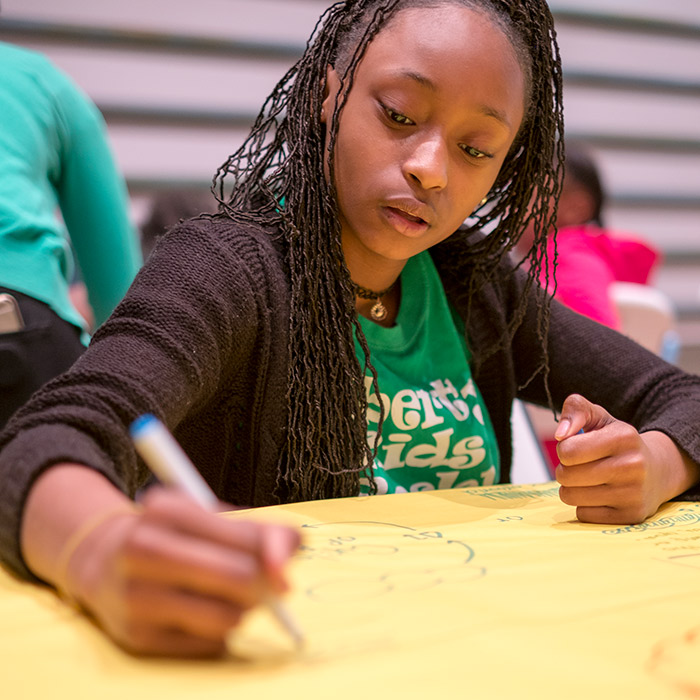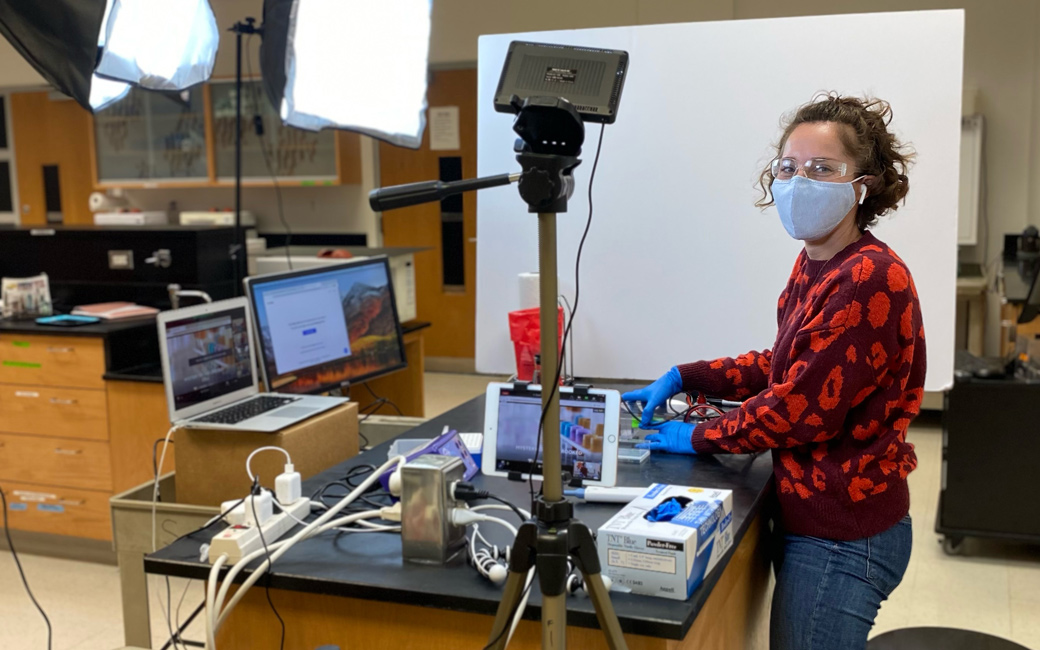
Science Explorers Club
Download all our Science Explorer Activities here!
Explore Our Activities!The Towson University Center for STEM Excellence has developed a variety of free digital resources for teachers and students. Watch our Distance Learning Resources Webinar (YouTube) for an overview of all of our resources. Check back regularly as we continue to provide new programming.

We have created a variety of science lessons you can incorporate into your existing curriculum. These lessons can be used for in-person learning, hybrid classrooms, as well as distance learning. Each lesson is contained in a Google Slides presentation, which you can easily assign to your students through a single link. Or project the lesson and work through the activities as a group. Instructions for Teachers (PDF) provides logistics on how to access and assign the lessons.
If you have an idea for a digital lesson you would like us to make, let us at scitech AT_TOWSON
Email scitech AT_TOWSON with questions.
| Lesson | description |
|---|---|
| Algae Adventure | Students learn about kelp, a specific kind of algae that grows into dense underwater forests. Are they like plants? How do they grow? Take a dive! Grades 3–6. |
| Amazing Appalachians | Students learn about plate tectonics by exploring the Appalachian Mountains. How old are they? And how did they form? Find out! Grades 3–6. |
| Bacterial Transformation | Students utilize recombinant DNA technology to make E. coli bacteria glow. After inserting a plasmid specifically engineered with the DNA sequence for a Green Fluorescent Protein (GFP), a gene that confers antibiotic resistance, and an inducible promotor into E. coli cells, students visualize the results under a UV light. Students are challenged to calculate the efficiency of the transformation process. Grades 11–12. |
| Bird Migration and Climate Change | Students learn about the research of a local scientist as they work to answer the driving question: Are bird migration patterns changing? Dr. Emily Cohen leads students through a series of investigative questions based on her work studying migration patterns in birds. This activity is designed for upper level high school students and fits well in biology, environmental science or research methods classes. Grades 9–12. NGSS Alignment. |
| Bumble Bee Boogie | Explore the life of bumble bees with your students by following the growth of a hive. Who lives there, and what do they do? Grades 3–6. |
| Celebrating Cicadas | The cicadas were special visitors to Maryland this past summer. In this lesson, students will learn about periodical cicadas and how to observe them in their local environment. Grades 3–6. Check out our webinar on cicadas and a list of other great cicada resources. |
| Cicada Chorus | 2021 was the year for Brood X cicadas to emerge in Maryland! In this lesson, students will compare annual and periodical cicadas, and learn about the three species of cicadas that in Brood X. Grades 7–12. Check out our webinar on cicadas and a list of other great cicada resources. |
| Do Mountains Last Forever? | Why are some mountains so tall? And others relatively short? In the lesson, students learn about the effects of weathering and erosion on different mountain ranges around the world. Grades 3–6. |
| Freshwater, Saltwater | Students learn about the Chesapeake Bay, the largest estuary in the United States, and what happens when fresh water and salt water mix. Grades 4–6. |
| How Do Scientists Know Things? | This nature of science activity is perfect for scaffolding students as they develop their observation and questioning skills in science. Grades 4–9. |
| Investigating Influenza | Students discover how viruses work, and how our immune systems respond to them. They explore how viral infections can be detected using an ELISA (enzyme-linked immunosorbent assay) to test patients' blood serum for antibodies against the virus. Grades 9–12. |
| It's a Gassy World! | Students explore issues related to climate change while answering the driving question: “Will warming oceans be better or worse at absorbing carbon dioxide?” Grades 6–9. |
| Looking Backward, Looking Forward | Students act as paleoclimatologists as they gather interpret data to infer Maryland's climate over the past 12,500 years. Grades 6–12. |
| Looking into Lactase | Students uncover how enzymes work by learning about how a pharmaceutical can be used to treat lactose intolerance in humans. Grades 9–12. |
| Mr. Trash Wheel | Students find innovative solutions to environmental problems by learning about Baltimore's very own Mr. Trash Wheel! Grades 3–6. |
| Natural Selection | Students explore natural selection, using camouflage as a case study to learn how the distribution of traits in a population can change between generations. Grades 4–6. |
| Ocean Acidification and Oysters | Students learn about the process of ocean acidification while working to answer the driving question "How will increasing amounts of carbon dioxide affect oysters?" Grades 6–12. |
| Oyster Gardening | Students find out all about oysters and how they support the health of the Chesapeake Bay. Grades 3–6. |
| Save the Bay! Unit | Engage students to solve real environmental problems in the Chesapeake Bay watershed. Students will learn about the Bay's physical and ecological characteristics, the current issues in the watershed, and how they can take action to help solve these problems. The unit consists of a series of 12 lessons. Grades 3–6. |
| Turtle Triathlon | Discover the world of Loggerhead turtles by following them on their journey, starting at the beach where they were born. On your mark. Get set. Go! Grades 3–6. |
The Science Explorers Club meets weekly via Zoom every and is open to any student in grades 3–5. Students are welcome to attend every session or drop in when it fits their schedule.
Check back here or subscribe to the TUCSE newsletter for more updates on Science Explorers for the 2022-2023 school year.
Email kberger AT_TOWSON with questions.
Use the videos below to engage and excite your students in STEM. We'll be adding new content all semester, so check back often for new videos.
| TOPIC | description |
|---|---|
| Baltimore Harbor EcoTour: Oyster Gardens | Learn how oyster gardening in the Inner Harbor is helping to increase oyster populations and clean the water in the Bay. (4 min video) |
| Baltimore Harbor EcoTour: Mr. Trash Wheel | Meet Mr. Trash Wheel! Located where the Jones Falls meets Baltimore's Inner Harbor, this solar-powered trash wheel prevents trash from entering the Chesapeake Bay. (4 min video) |
| Baltimore Harbor EcoTour: Rain Garden (with investigation) | Learn about how rain gardens help to keep the water in the Inner Harbor of Baltimore clean and healthy! This version of the video shows an investigation designed to show how the components of a rain garden work to clean the water before it enters the Harbor. (4 min video) |
| Baltimore Harbor EcoTour: Rain Garden | Rain gardens can help to keep pollutants and contaminants from run-off from entering the water in the Inner Harbor. This short video details what rain gardens are and how they're being used in Baltimore City to keep the Chesapeake Bay healthy! (3 min video) |
| Science Activities for Kids | Faculty and students have created a variety of short educational videos and activities designed to engage students in learning about the research happening at the Institute for Marine and Environmental Technology. (IMET website) |
Are you trying to figure out how to incorporate lab-based activities into your online curriculum? Let us help! We created a series of demo videos of science experiments and investigations that your students usually do themselves in the classroom. These short, inquiry-based videos are designed to be easily incorporated into your existing virtual lessons or can be used as make-up assignments or for extension activities. Email tucse AT_TOWSON to request a teacher answer guide for lessons.
Check out complete lessons created by teachers that incorporate these videos.
| VIDEO | DESCRIPTION |
|---|---|
| Combustion of Steel Wool | This video allows students to investigate the effects of combustion on the mass of steel wool. Grades 9–12. (3 min video) |
| Crime Scene Investigation | This video supports lessons centered on the process of DNA gel electrophoresis. Students are introduced to the process of gel electrophoresis and are challenged to compare banding patterns of DNA found at a crime science to samples taken from several suspects. Grades 7–12. (13 min video) |
| Demystifying Diffusion | This video allows students to explore the relationship between surface area and diffusion rate. Grades 9–12. (4 min video) |
| Flame Test | These videos can support the common 'flame test' lab activity in which students must figure out whether the cation or the anion determines the color of the fire when a compound burns. Grades 9–12. (14 sec videos). View the webinar for this lesson. |
| Making Salt | Join us as we react sodium hydrogen carbonate (aka baking soda) with hydrochloric acid (like the acid found in your stomach) to produce sodium chloride (table salt), carbon dioxide and water. Perfect for chemistry students in grades 9–12. (7 min video) |
| Observing Fermentation | This video allows students to observe the process of fermentation using yeast, sugar, and water. Grades 7–12. (2.5 min video) |
| Unknown Substance Identification | This video is perfect for chemistry or forensic science classes. Videos show how eight known over-the-counter medications react to several different chemicals. Students can then be challenged to identify up to ten of the 'unknown' samples, using evidence and reasoning gained by comparing them to the known samples. Grades 9–12. (2 min videos) |
If you have questions, please email scitech AT_TOWSON.